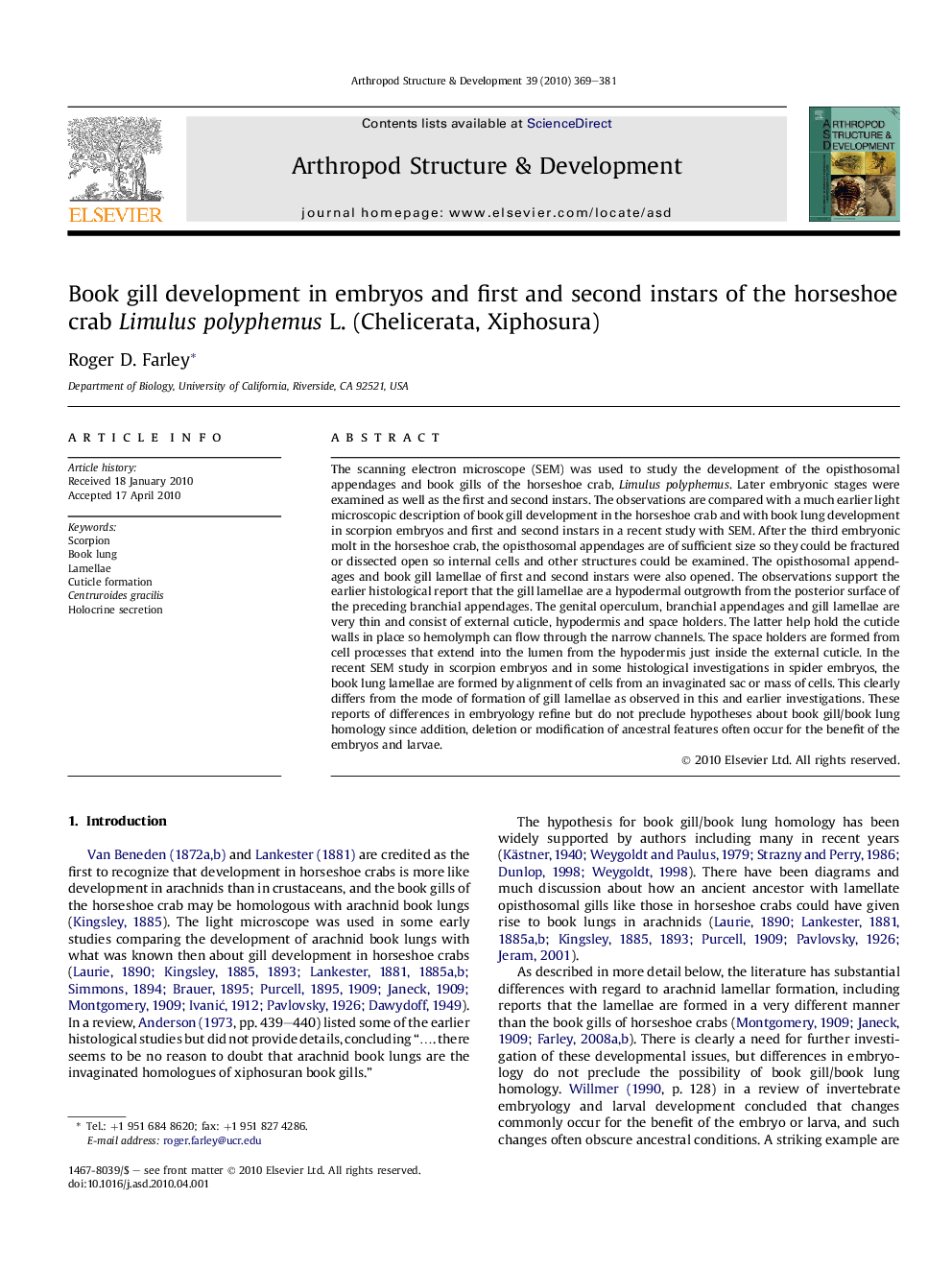| کد مقاله | کد نشریه | سال انتشار | مقاله انگلیسی | نسخه تمام متن |
|---|---|---|---|---|
| 2778841 | 1153171 | 2010 | 13 صفحه PDF | دانلود رایگان |

The scanning electron microscope (SEM) was used to study the development of the opisthosomal appendages and book gills of the horseshoe crab, Limulus polyphemus. Later embryonic stages were examined as well as the first and second instars. The observations are compared with a much earlier light microscopic description of book gill development in the horseshoe crab and with book lung development in scorpion embryos and first and second instars in a recent study with SEM. After the third embryonic molt in the horseshoe crab, the opisthosomal appendages are of sufficient size so they could be fractured or dissected open so internal cells and other structures could be examined. The opisthosomal appendages and book gill lamellae of first and second instars were also opened. The observations support the earlier histological report that the gill lamellae are a hypodermal outgrowth from the posterior surface of the preceding branchial appendages. The genital operculum, branchial appendages and gill lamellae are very thin and consist of external cuticle, hypodermis and space holders. The latter help hold the cuticle walls in place so hemolymph can flow through the narrow channels. The space holders are formed from cell processes that extend into the lumen from the hypodermis just inside the external cuticle. In the recent SEM study in scorpion embryos and in some histological investigations in spider embryos, the book lung lamellae are formed by alignment of cells from an invaginated sac or mass of cells. This clearly differs from the mode of formation of gill lamellae as observed in this and earlier investigations. These reports of differences in embryology refine but do not preclude hypotheses about book gill/book lung homology since addition, deletion or modification of ancestral features often occur for the benefit of the embryos and larvae.
Journal: Arthropod Structure & Development - Volume 39, Issue 5, September 2010, Pages 369–381